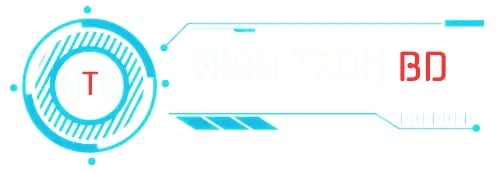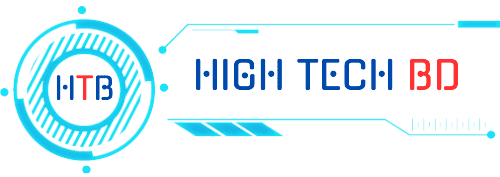Business Website Design and Development We are providing the best offer for you. A robust online presence is indispensable for businesses looking to succeed in today’s digital marketplace. Business website design and development encompass the creation of a website that not only looks appealing but also functions seamlessly to drive user engagement, generate leads, and promote brand credibility. This comprehensive guide will help you understand the key elements, benefits, and best practices for business website design and development.
1. Why Business Website Design and Development Matter
A business website is your digital storefront, representing your brand 24/7. Here’s why focusing on professional design and development is vital:
First Impressions Are Crucial: Most consumers form an opinion about a business based on its website design within seconds. A clean, modern design can make the difference between capturing a lead and losing it.
Enhances Brand Trust: A well-designed website establishes credibility and professionalism, making users more likely to engage with your brand.
SEO Benefits: A website designed with SEO in mind can improve search engine rankings, making your business more visible to potential customers.
Increases User Engagement: Thoughtful design and development practices create a user-friendly experience that keeps visitors on your site longer and encourages interaction.
Supports Business Growth: With scalable development practices, your website can grow with your business, accommodating new features and functionalities over time.

2. Essential Elements of Business Website Design
Effective website design isn’t just about aesthetics—it’s about creating a seamless user experience. Here are the key elements:
Responsive Design: Ensuring your website is optimized for all devices, including smartphones, tablets, and desktops, is non-negotiable. Mobile responsiveness not only caters to a broader audience but also supports better SEO performance.
Intuitive Navigation: A well-organized site structure and clear menus help users find information quickly, leading to a more positive user experience.
Visual Appeal and Branding: Your website should reflect your brand’s identity through cohesive use of colors, fonts, and images that align with your company’s voice.
High-Quality Content: Content that is informative, engaging, and optimized for relevant keywords is crucial for user satisfaction and search engine rankings.
Calls-to-Action (CTAs): Strategic placement of CTAs guides users toward taking specific actions, such as filling out a form, subscribing to a newsletter, or making a purchase.
3. The Web Development Process for Business Websites
Understanding the development process can help you plan effectively and set realistic expectations. Here’s a breakdown of the key stages:
Discovery and Planning: The first step involves identifying your business goals, understanding your target audience, and researching your competitors. This phase helps in building a foundation for the entire project.
Wireframing and Prototyping: Developers create wireframes that serve as a blueprint for your website’s layout. These wireframes focus on functionality and placement without detailed design elements.
Design Phase: The design process incorporates your brand’s color scheme, typography, and other visual elements. Designers create mockups that showcase what the final product will look like.
Development: This stage brings the design to life using coding languages like HTML, CSS, JavaScript, and back-end technologies such as PHP or Python. Developers ensure that all functionalities—whether forms, interactive features, or shopping carts—work seamlessly.
Testing and Quality Assurance (QA): Before launch, your website undergoes thorough testing to ensure it works well across all devices and browsers. QA checks for bugs, broken links, and performance issues.
Launch and Post-Launch Support: Once everything has been tested and approved, the website goes live. Post-launch support ensures that any issues are addressed quickly and that the site stays updated and secure.
4. Common Features of High-Performing Business Websites
To stand out, a business website should include specific features that enhance usability and conversion rates:
Fast Load Speed: Websites that load within 2-3 seconds retain visitors more effectively and are favored by search engines.
SEO Optimization: Integrating SEO best practices, such as keyword-rich content, meta tags, and alt text for images, improves your visibility on search engines.
Contact Information: Displaying your contact details prominently ensures that potential clients can reach you easily.
Secure SSL Encryption: An SSL certificate ensures that user data is protected, adding a layer of trust and helping your website’s SEO performance.
Blog Section: Regularly updating a blog with relevant content helps establish authority in your industry and improves your site’s SEO.
5. Trends in Business Website Design and Development
Staying current with the latest design trends can make your website more engaging and attractive:
Minimalist Design: Simple, clean designs reduce clutter and enhance user focus on the content.
Dark Mode Option: Many users prefer browsing with dark mode to reduce eye strain, so offering this option can enhance user experience.
Interactive Elements: Incorporating elements like scroll animations, interactive infographics, and hover effects adds a modern touch and improves engagement.
AI-Powered Features: Chatbots and AI-driven search functionality can provide immediate assistance to users, enhancing their overall experience.
Accessibility: Ensuring your website is accessible to users with disabilities is not just a good practice but is legally required in many areas.
6. Budgeting for Website Design and Development
Selecting the right team for your business website is crucial. Here’s what to consider:
Portfolio and Experience: Review previous projects to assess if their design style aligns with your vision.
Client Testimonials: Positive feedback from past clients can provide confidence in their ability to deliver quality work.
Technical Expertise: Ensure the team has experience with the tools and platforms that fit your needs, whether that’s WordPress, custom CMS, or frameworks like React.
Communication: A transparent development process with regular updates and feedback loops ensures smoother collaboration.
Support Services: Confirm that the team offers maintenance and support post-launch for updates and troubleshooting.
7. Benefits of Investing in Professional Business Website Design and Development
Investing in professional design and development services can yield substantial long-term benefits:
Improved SEO Performance: A site built with SEO best practices is more likely to rank higher on search engines, attracting more organic traffic.
Enhanced User Experience: A website designed with the end user in mind leads to lower bounce rates and higher customer satisfaction.
Stronger Brand Identity: Custom design elements aligned with your brand messaging create a memorable experience that sets you apart from competitors.
Increased Conversions: Thoughtful design and development strategies, such as intuitive CTAs and user-friendly layouts, can lead to higher conversion rates.
Scalability: A professionally built website can be easily updated with new features as your business grows.
Conclusion:
In a competitive digital landscape, your business website acts as the first impression for potential clients. Prioritizing professional design and development ensures that your site not only attracts visitors but also converts them into loyal customers. By focusing on user experience, SEO, and modern design elements, you can create a business website that stands out and supports your growth for years to come.



